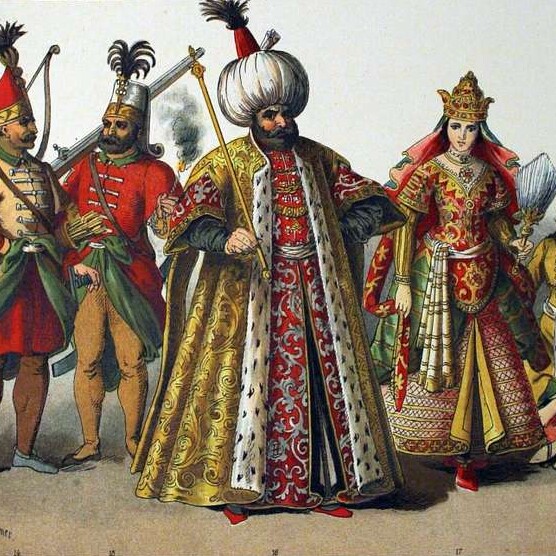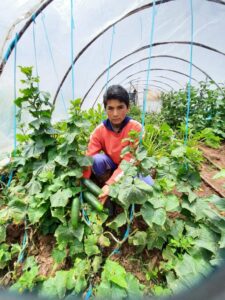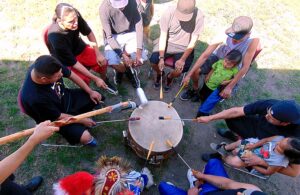In recent years, the fashion industry has experienced a noteworthy revival of ancient textile techniques, effectively merging traditional wisdom with contemporary innovation.
This exploration examines the evolution of these techniques, their significant role in promoting sustainability, and the cultural heritage they preserve. Additionally, it addresses the challenges that fashion brands encounter when integrating these practices, as well as the exciting opportunities they offer.
This analysis invites one to embark on a journey through history to discover how these time-honored skills are reshaping the future of fashion.
The Evolution of Textile Techniques and Fashion Trends
.jpg_00.jpeg)
The evolution of textile techniques in fashion represents a compelling journey that merges historical craftsmanship with modern design innovation. Over the centuries, various cultures have developed a wide range of weaving and embroidery techniques that not only embody their cultural heritage but also significantly influence contemporary fashion trends.
From traditional handloom textiles to advancements in textile technology, the transformation in textile production has played a pivotal role in shaping the identity of fashion. This progression highlights a harmonious blend of traditional artistry, modern fashion, and contemporary design, which continues to evolve with each decade.
This rich historical narrative informs current practices and serves as a source of inspiration for future innovations within the textile industry.
How Have Textile Techniques Changed Over Time?
Textile techniques have experienced substantial transformations over time, adapting to technological advancements and evolving fashion preferences. The evolution of textiles encompasses not only the aesthetics of various historical periods but also the practical requirements of different societies, influenced by design trends and fashion evolution.
Historically, artisans have utilized a range of methods, including weaving, dyeing, and printing, with each technique evolving alongside the introduction of new tools and materials. For example, the shift from handlooms to power looms in the 18th century represented a significant advancement in textile production, enhancing efficiency and facilitating the mass production of fabrics, a turning point in textile manufacturing.
Contemporary innovations, such as computer-aided design and digital printing, have further revolutionized the weaving industry, enabling the creation of intricate designs and expediting production timelines. These advancements not only optimize the manufacturing process but also address the diverse demands of modern fashion, highlighting a harmonious integration of tradition and innovation within today’s textile sector.
What Role Did Tradition Play in Textile Techniques?
Tradition plays a crucial role in shaping textile techniques, where cultural heritage and historical narratives are intricately interwoven into the fabric of textile arts. Traditional patterns and artisanal methods not only reflect the identities of communities but also serve as a foundation for the revival of textile craftsmanship in contemporary fashion.
In an era increasingly characterized by mass production and fast fashion, the resurgence of heritage crafts underscores the significance of authenticity, sustainable fashion, and eco-friendly materials.
For example, artisans in regions such as India and Peru are integrating time-honored techniques, including block printing and Andean weaving, with modern designs that resonate with today’s consumers. This fusion not only preserves cultural identities but also highlights the versatility of traditional art forms.
By promoting the work of these artisans, contemporary fashion can cultivate a deeper appreciation for the narratives and skills inherent in each piece, ensuring that these remarkable textile techniques continue to flourish in a rapidly evolving landscape of fashion reimagining and design innovation.
The Revival of Ancient Textile Techniques in Modern Fashion and Cultural Expressions
The resurgence of ancient textile techniques in contemporary fashion signifies a heightened appreciation for sustainable fashion practices, textile storytelling, and the craftsmanship inherent in heritage textiles.
Designers and modern artisans are increasingly drawing inspiration from vintage techniques, reinterpreting them to align with present-day fashion sensibilities while prioritizing the use of eco-friendly materials and artisanal methods.
Why Are Ancient Textile Techniques Making a Comeback?
Ancient textile techniques are experiencing a resurgence due to an increasing awareness of sustainability and a desire to reconnect with craftsmanship that emphasizes cultural identity. As the slow fashion movement gains momentum, both consumers and designers are recognizing the importance of preserving traditional artistry, indigenous practices, and its relevance in contemporary fashion.
This revival is driven by a growing consumer demand for ethical fashion, as individuals increasingly seek unique, handcrafted pieces that convey a narrative. By utilizing these time-honored methods, artisans underscore the importance of using natural materials and processes that minimize environmental impact.
This shift not only honors historical practices but also addresses consumers’ desires for authenticity, fashion authenticity, and mindful consumption. In an era dominated by fast fashion, the appeal of sustainable creations presents a refreshing alternative that resonates with advocates for responsible purchasing.
Consequently, these techniques embody the principles of slow fashion, fostering a renewed appreciation for the art of textile production that is both aesthetically pleasing and meaningful.
What Are Some Examples of Ancient Textile Techniques Being Used in Modern Fashion?
Examples of ancient textile techniques being employed in modern fashion are plentiful, as global artisans revive practices such as handloom weaving, natural dyeing, and intricate embroidery, contributing to a craft revival and textile diversity.
These handcrafted textiles not only honor traditional craftsmanship but also represent innovative materials that expand the possibilities of fabric manipulation within contemporary design.
For instance, the application of shibori dyeing techniques from Japan has garnered significant attention in haute couture, resulting in striking patterns that interact with light and texture.
Similarly, the art of block printing, which holds historical significance in India, has transformed into a sustainable practice that combines aesthetics with functionality, offering vibrant and eco-friendly options for today’s discerning consumers.
The integration of these time-honored methods with modern design philosophies exemplifies how cultural influences profoundly shape contemporary styles, enabling designers to create garments that are not only visually appealing but also convey rich narratives of heritage, identity, textile symbolism, and innovation.
The Impact of Ancient Textile Techniques on Sustainability in Fashion and Cultural Preservation
.jpg_01.jpeg)
Ancient textile techniques play a crucial role in enhancing sustainability within the fashion industry by promoting the use of eco-friendly materials, fashion sustainability, and sustainable practices that respect the environment.
By adopting traditional methods that have endured through generations, the fashion sector can reduce waste, support ethical practices, and preserve cultural heritage, all while minimizing its ecological footprint.
How Do Ancient Textile Techniques Promote Sustainability in Fashion?
Ancient textile techniques significantly contribute to sustainability in the fashion industry by emphasizing eco-friendly practices and artisanal methods that prioritize environmental considerations. By focusing on quality rather than quantity, these techniques align with the principles of the slow fashion movement, encouraging consumers to invest in vintage textiles and handmade garments.
For example, traditional weaving methods often employ natural dyes and recycled materials, which substantially reduce chemical waste, promote textile sustainability, and lessen reliance on fast fashion production cycles.
Additionally, embracing artisanal craftsmanship not only enhances the uniqueness of each item but also supports local economies, providing artisans with a platform to showcase their skills. The transition toward these timeless techniques is essential in cultivating a more conscious consumer base, where individuals become increasingly mindful of their purchasing decisions, ultimately promoting a sustainable approach within an industry that has been widely recognized for its environmental impact.
What Are the Environmental Benefits of Using Ancient Textile Techniques?
The environmental benefits of utilizing ancient textile techniques are significant, as these methods frequently depend on natural fibers and sustainable practices that minimize ecological impact. Techniques that have been transmitted through generations emphasize resource conservation and reduce the dependence on synthetic materials, thereby providing a more environmentally friendly approach to textile production, and promoting fashion experimentation and textile exploration.
This lineage of craftsmanship not only honors traditional practices but also addresses contemporary environmental challenges. By prioritizing the use of natural fibers such as cotton, flax, and hemp, these methods decrease chemical usage, thereby protecting soil and water resources.
Moreover, the energy requirements associated with traditional processing techniques are considerably lower than those of modern industrial methods, resulting in a reduced carbon footprint and fostering fashion reinvention.
By adopting these ancient practices, the textile industry can cultivate an approach that respects the planet and promotes a deeper connection to the environment, encouraging consumers to make informed decisions that prioritize sustainability over mass production.
How Do Ancient Textile Techniques Preserve Cultural Heritage and Fashion Artisanship?
Ancient textile techniques, such as weaving and embroidery, are instrumental in the preservation of cultural heritage, as they reflect traditional patterns and textile arts that embody the identities of various communities. These techniques serve as a living record of cultural history, passed down through generations and increasingly celebrated in contemporary fashion.
Such practices not only establish connections between individuals and their ancestry but also foster a sense of cultural identity and pride in cultural narratives. For example, the vibrant handwoven textiles of the Andean communities in Peru encapsulate their rich heritage, featuring intricate designs that convey stories from the past.
Similarly, the age-old batik craftsmanship in Indonesia showcases a fusion of cultural influences while reinforcing local identity through distinctive motifs and colors, illustrating the importance of textile narratives.
By embracing these ancient techniques, communities can sustain their traditions and enable themselves economically through the global appreciation of their craftsmanship and the revival of traditional techniques within the modern fashion industry.
The Challenges and Opportunities of Incorporating Ancient Textile Techniques in Fashion
Incorporating ancient textile techniques into contemporary fashion presents both challenges and opportunities for fashion brands striving to harmonize modern demands with a dedication to craftsmanship, sustainable fashion, and ethical practices.
Although these techniques provide distinct aesthetic and cultural value, navigating the complexities of production processes and fashion trends can be intricate.
What Are the Obstacles to Using Ancient Textile Techniques in Fashion?
The challenges associated with incorporating ancient textile techniques into contemporary design are complex, primarily arising from the contrast between traditional production methods and the modern industry’s requirements for scale and speed.
Fashion brands often encounter difficulties in locating skilled artisans capable of replicating these time-honored processes, such as fabric manipulation, and the ethical considerations surrounding material sourcing can further complicate their endeavors.
The stringent production timelines dictated by consumer expectations exert considerable pressure on brands to expedite product delivery, frequently resulting in compromises regarding quality.
Additionally, labor costs may intensify these difficulties, as the intricate nature of handcrafted textiles typically necessitates higher wages for skilled artisans.
To effectively address these challenges, brands can pursue partnerships with local artisans, thereby promoting fair trade practices while simultaneously preserving ancient techniques. Furthermore, implementing flexible supply chains and utilizing technology for efficient workflow management can enhance market viability, enabling fashion houses to uphold cultural integrity while fulfilling the demands of modern consumers through fashion sustainability.
How Can Fashion Brands Overcome These Challenges?
.jpg_10.jpeg)
Fashion brands can effectively address the challenges associated with integrating ancient textile techniques by implementing innovative solutions that encourage collaboration with community artisans and uphold sustainable practices. By prioritizing partnerships with skilled craftspeople, brands are able to produce authentic products while ensuring fair compensation, cultural respect, and a commitment to fashion sustainability.
To successfully incorporate these time-honored methods into their business models, brands should consider establishing dedicated programs focused on artisan training that enable local communities. A notable example of this is the collaboration between major luxury brands and indigenous weavers, which not only highlights unique craftsmanship but also revitalizes traditional skills through fashion artisanship.
By investing in textile workshops that teach these techniques, fashion labels can preserve the rich heritage of textile arts while enhancing their brand storytelling. Furthermore, promoting transparency in sourcing will resonate with ethically minded consumers, thereby further supporting the integration of ancient practices into contemporary fashion narratives and fashion evolution.
What Are the Opportunities for Fashion Brands Using Ancient Textile Techniques?
The opportunities for fashion brands utilizing ancient textile techniques are extensive, offering pathways for distinctive designs that align with an increasing consumer demand for authenticity and storytelling, facilitated by textile innovation and craftsmanship revival.
By adopting these traditional practices, brands can cultivate a unique identity that resonates with ethically conscious consumers and enhances their influence within the fashion industry, fostering a deeper connection with fashion authenticity.
This incorporation not only sets them apart in a highly competitive market but also enables them to convey the rich narratives behind their creations, inviting consumers to engage with the brand’s journey and appreciate the cultural significance of their offerings.
Aligning these timeless methods with contemporary values fosters a sense of community and trust—essential components that drive sustained brand loyalty through cultural preservation and textile diversity.
As consumers become more discerning, they seek connections that extend beyond mere products; they desire experiences and narratives that reflect their own beliefs and heritage.
Therefore, leveraging ancient techniques can facilitate deeper engagement, transforming the brand from a mere option into a lifestyle choice for the consumer.
The Future of Ancient Textile Techniques in Fashion
The future of ancient textile techniques in the fashion industry is promising, particularly as the sector increasingly prioritizes sustainability and cultural preservation, while embracing the potential of textile exploration.
As consumers grow more cognizant of the environmental implications of their purchasing decisions, there is a notable shift toward the integration of ancient techniques. This evolution has the potential to redefine fashion and promote ethical practices throughout the textile industry, supporting the craft revival movement.
What Trends Can We Expect to See in the Use of Ancient Textile Techniques in Fashion?
Emerging trends in the application of ancient textile techniques within the fashion industry are poised to underscore artisanal fashion and the incorporation of cultural influences that align with consumers’ values. As sustainability continues to gain prominence as a primary concern, designers are anticipated to seek innovative methods for integrating traditional techniques into contemporary fashion narratives, reflecting the ongoing fashion reimagining process.
Specifically, the increasing interest in natural dyes, which offer a more environmentally friendly alternative to synthetic options, reflects a growing consumer desire for authenticity and a connection to nature. Upcycling has also gained significant traction, as it repurposes discarded materials into fashionable statements that address the urgent need for mindful consumption and support fashion experimentation.
The synthesis of various textile techniques not only pays tribute to cultural heritage but also fosters creativity and individuality, catering to a consumer demographic that is increasingly drawn to unique, personalized items. These evolving practices illustrate a broader cultural shift in which shoppers prioritize sustainability and craftsmanship, fundamentally reshaping the future landscape of the fashion industry through design innovation.
How Will the Incorporation of Ancient Textile Techniques Impact the Fashion Industry?
The incorporation of ancient textile techniques is expected to significantly influence the fashion industry, promoting a deeper commitment to sustainability and craftsmanship that resonates with contemporary consumers. As brands adopt these techniques, they will not only enhance their product offerings but also strengthen consumer engagement through authentic narratives and design aesthetics.
This shift indicates an evolution in consumer behavior, as individuals increasingly prioritize ethical practices and seek products that reflect their values. Consequently, the fashion industry may experience a transformative movement towards transparency, with consumers demanding insight into the methods and locations of garment production, aligning with fashion movements that emphasize fashion and identity.
Integrating these time-honored methods can also raise industry standards, as brands prioritize quality over quantity, aligning with an emerging ethos that values repairability and durability, promoting fashion authenticity.
Ultimately, this convergence of ancient wisdom and modern sensibilities has the potential to redefine fashion, establishing a new paradigm that champions environmental responsibility while celebrating rich cultural heritages, further supported by fashion reinvention.
What Are the Potential Benefits and Drawbacks of a Shift Towards Ancient Textile Techniques in Fashion?
A transition towards ancient textile techniques in the fashion industry presents both advantages and disadvantages that have the potential to significantly reshape the fashion landscape. Among the advantages are sustainability and the revival of traditional craftsmanship, reflected in the craft revival movement; however, challenges such as scalability and cost-effectiveness warrant careful analysis.
As the industry navigates the implications of this transition, it is essential to recognize that ancient methods can contribute to waste reduction and the promotion of ethical labor practices. By incorporating traditional techniques, brands can produce distinctive pieces that embody a narrative, thereby fostering a deeper connection with consumers who seek authenticity through textile storytelling.
Nevertheless, challenges emerge when attempting to scale production to meet contemporary demand, as the intricate processes involved are often not conducive to mass production without compromising their integrity. Additionally, the initial investment required for adopting such practices may be formidable for many businesses, raising concerns about economic viability in a rapidly changing market characterized by trends and swift turnover, illustrating the complexities of incorporating vintage textiles and textile craftsmanship.
Frequently Asked Questions
.jpg_11.jpeg)
What does it mean for ancient textile techniques to reshape fashion and influence fashion trends?
It refers to the incorporation of traditional methods and designs from different cultures into modern fashion, creating a fusion of the old and the new. This fusion includes ancient textiles and vintage textiles, showcasing the beauty of textile craftsmanship.
Why are ancient textile techniques becoming popular in the fashion industry?
They offer a unique and authentic touch to garments, adding a cultural and historical significance to the overall design. This is a reflection of cultural heritage and the artistry involved in textile craftsmanship.
What are some examples of ancient textile techniques being used in modern fashion?
Some examples include hand-weaving, batik printing, and embroidery techniques from cultures such as India, Africa, and South America. These techniques highlight the importance of traditional crafts and fabric design in contemporary design.
Why is it important to preserve and celebrate ancient textile techniques?
It helps to keep cultural traditions alive and supports local artisans and communities who have passed down these techniques for generations. This preservation and celebration ensure that cultural identity and fashion history continue to inspire new fashion trends and pattern making.
How can incorporating ancient textile techniques into fashion promote sustainability?
By using these traditional methods, fashion brands can support sustainable practices such as ethical sourcing and reduce the environmental impact of fast fashion. This approach aligns with the principles of sustainable fashion and slow fashion, promoting eco-friendly materials and textile sustainability.
Are there any challenges in incorporating ancient textile techniques into fashion?
One challenge is ensuring that the techniques are respectfully and accurately represented, avoiding cultural appropriation or misrepresentation. Another challenge may be the cost of using handmade techniques, which can be more expensive than mass-produced methods. Additionally, the integration of indigenous practices and textile narratives requires careful consideration of cultural significance and heritage preservation.

My name is Bruno, I have been a writer for 5 years and I work with website creation. My goal is to provide true information to readers. In fact, on this site I write about cultures and traditions, which I have been passionate about since childhood.




